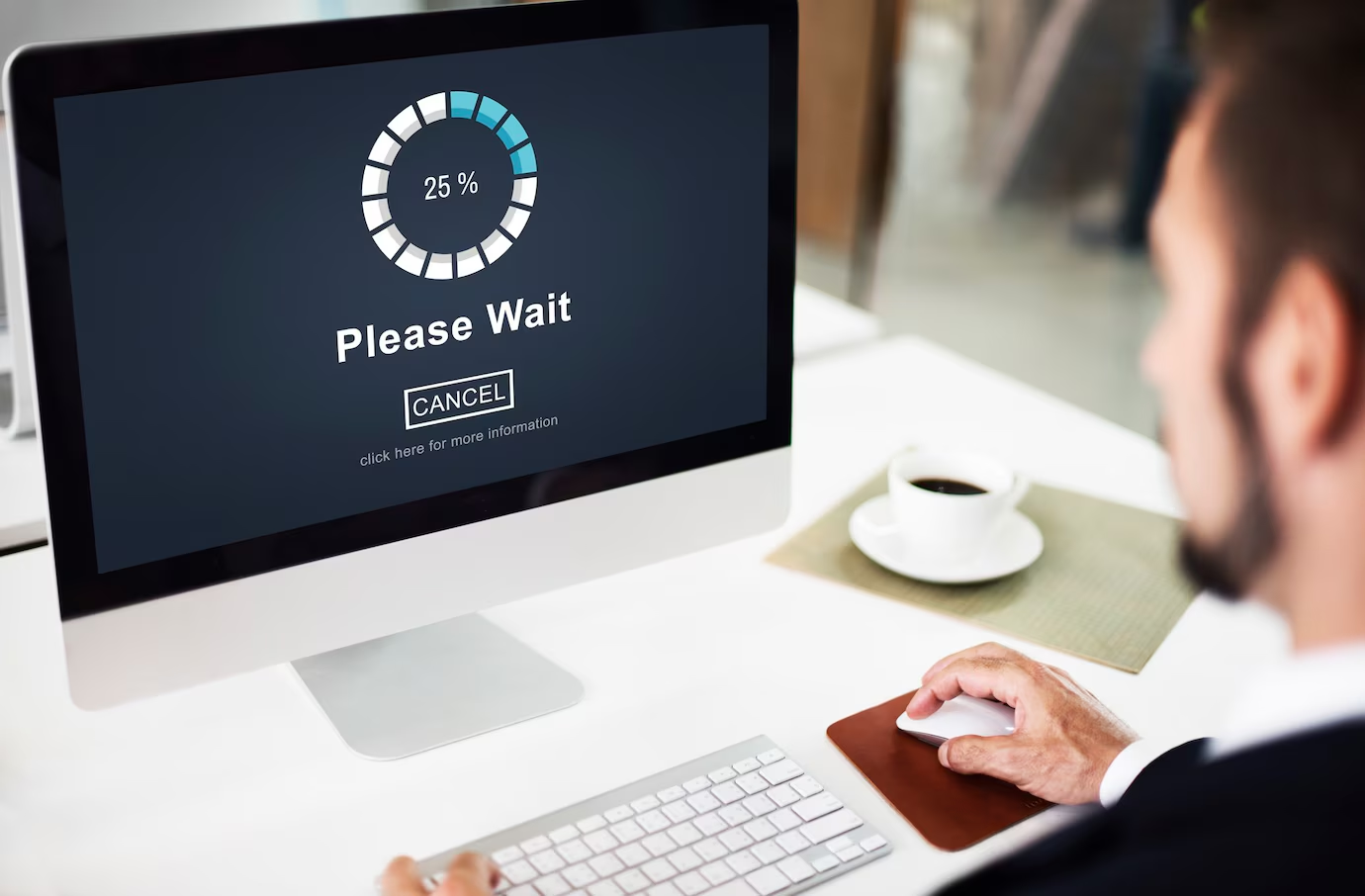Optimizing Mobile App UX for Faster Load Times and Better Performance: A Guide for SMEs

In today's fast-paced digital world, mobile app users expect seamless and efficient experiences. Load times and app performance play critical roles in shaping how users perceive your app. For small and medium-sized enterprises (SMEs), optimizing mobile app performance can be the difference between keeping customers engaged or losing them to competitors.
A fitness tracking app, for example, reduced its load time by optimizing image compression and caching. This improvement allowed users to quickly access workout data, and the result was a significant boost in user retention. This example underscores the importance of focusing on performance in mobile app development.

In this article, we will explore why fast load times are crucial for user experience (UX), and we'll provide actionable strategies to help SMEs enhance their mobile app's performance. From asset optimization and caching to asynchronous loading, we'll cover everything you need to know to keep your app efficient and your users satisfied.
The Importance of Fast Load Times in Mobile App UX
When users open a mobile app, they expect an immediate response. If your app takes too long to load, users are likely to abandon it, potentially never returning. Research shows that users will exit an app if it doesn’t load within three seconds. This is even more critical for SMEs, where each user interaction could be a step toward building a loyal customer base.
Here’s why fast load times matter:
-
First Impressions Count: A slow-loading app creates a negative first impression. Users often perceive performance as a reflection of quality, so if your app struggles to load, they may assume it is unreliable or poorly made.
-
Impact on Retention and Engagement: Users are more likely to stay engaged with an app that performs well. Faster load times mean users can access the app’s content or features quickly, keeping them satisfied and increasing the likelihood of long-term engagement.
-
SEO and App Store Rankings: Search engines and app stores consider load times as part of their ranking algorithms. A faster app may improve your app’s visibility, making it easier for potential users to discover and download.
For SMEs, the user experience needs to be flawless from the start. Optimizing your app’s performance can help you stand out from competitors and build a strong relationship with your customers.
Strategies for Optimizing Mobile App Load Times and Performance
Optimizing a mobile app involves several strategies, from improving the way assets are handled to streamlining back-end processes. Below are practical techniques SMEs can implement to enhance their app's performance.
1. Optimize Images and Multimedia Assets
Multimedia elements like images and videos often take up the most space and time when loading, particularly on mobile devices. Compressing these assets can significantly reduce load times without sacrificing quality.
-
Image Compression: Use tools to compress image sizes while maintaining visual quality. Formats like WebP for images offer a smaller file size compared to PNG or JPEG without noticeable loss of quality. For mobile apps, serving smaller, compressed images ensures faster load times, especially on slower mobile networks.
-
Adaptive Images: Implement adaptive images based on screen size and resolution. This reduces the amount of data transferred, especially for users with smaller screens. For example, there’s no need to serve a large image to a smartphone user when a smaller resolution would suffice.
-
Lazy Loading: Lazy loading ensures that images and other heavy assets are only loaded when they are needed, such as when a user scrolls down the page. This reduces the initial load time and improves overall performance, particularly for apps with content-heavy interfaces.
2. Use Caching to Reduce Load Times
Caching is one of the most effective ways to improve mobile app performance. It allows frequently accessed data to be stored locally on a user’s device, reducing the need to repeatedly download content from the server.
-
App Caching: Cache static resources such as images, logos, and scripts that do not change frequently. This minimizes data transfer and speeds up load times when users open the app.
-
Data Caching: Store important user data locally so the app can retrieve it quickly. For example, a fitness tracking app could cache workout history or commonly used features, allowing users to access their data without waiting for a server request.
-
Cache Expiration Policies: Implement smart cache expiration policies that ensure outdated content is updated without negatively affecting performance. This balance between keeping the cache fresh and optimizing speed helps maintain both user satisfaction and app efficiency.
3. Implement Asynchronous Loading
Asynchronous loading allows your app to load only essential elements first, ensuring that the most important content appears quickly, while secondary elements load in the background.
-
Async Data Requests: When a user opens the app, prioritize loading key content first, such as the main dashboard or features critical to the app’s function. Other data, such as detailed reports or secondary features, can load asynchronously.
-
Preload Critical Content: Preload essential resources that users are likely to need immediately upon launching the app. This ensures a seamless experience as they navigate the app. Preloading also reduces perceived wait times, keeping users engaged while the rest of the app loads in the background.
4. Minimize HTTP Requests
Each asset your app needs—whether it’s an image, style sheet, or script—requires a separate HTTP request, which can slow down load times. Reducing the number of these requests can greatly improve performance.
-
Combine Files: Consolidate multiple CSS, JavaScript, and image files into a single file whenever possible. This reduces the number of HTTP requests required to load a page, improving performance.
-
Inline Critical CSS: For critical sections of the app, inline the CSS directly into the HTML. This eliminates the need for an additional CSS file request, allowing important parts of the app to load faster.
-
Use Content Delivery Networks (CDNs): CDNs distribute the hosting of your app’s assets across multiple locations worldwide. This ensures that users download data from the server closest to their location, reducing latency and improving load times.
5. Optimize API Calls and Data Transfer
APIs play a crucial role in many mobile apps by allowing the app to communicate with servers or third-party services. However, inefficient API calls can slow down your app and increase load times.
-
Batch API Requests: Instead of making several small API requests, batch them into fewer, larger requests. This reduces the number of times the app has to communicate with the server, speeding up data retrieval.
-
Reduce Payload Size: Ensure that the data sent in each API call is as lean as possible. Only request the information necessary for that particular screen or action. Avoid sending large payloads of unused data, which can cause unnecessary delays.
-
Implement API Rate Limiting: Overuse of API calls can slow down performance and increase costs, especially if you’re relying on third-party services. Implement rate limiting to ensure that your app doesn’t exceed its limits and that calls are optimized for speed.
6. Test Performance Regularly
Performance optimization is an ongoing process. Regular testing helps identify bottlenecks and areas for improvement before they impact user experience.
-
Use Performance Monitoring Tools: Tools like Firebase Performance Monitoring or New Relic can track your app’s performance over time. They help you identify slow parts of your app, such as specific features or functions that take too long to load.
-
Simulate Different Network Conditions: Test your app under various conditions, including slower 3G or 4G networks, to ensure that users in regions with slower internet speeds still experience smooth performance.
-
A/B Test Different Optimizations: Experiment with different optimization strategies to determine which changes have the most positive impact on load times and user experience. Continuously refine your app based on the results of these tests.
Conclusion: Prioritizing Performance to Enhance UX for SMEs
For SMEs, the ability to deliver a fast and responsive mobile app is essential to maintaining a competitive edge. By optimizing load times and performance, you not only improve user satisfaction but also increase the likelihood that users will return to your app.
Start by focusing on key areas like image compression, caching, and asynchronous loading, and test regularly to ensure continuous improvement. In doing so, your mobile app will not only meet but exceed user expectations, leading to higher engagement and better business outcomes.
Whether you're developing a fitness app, an e-commerce platform, or any other mobile service, prioritizing performance through user-centered design will keep your customers engaged and ensure that your app continues to deliver value efficiently.


Subscribe to follow product news, latest in technology, solutions, and updates
Other articles for you



Let’s build digital products that are simply awesome !
We will get back to you within 24 hours!Go to contact us Please tell us your ideas.
Please tell us your ideas.







